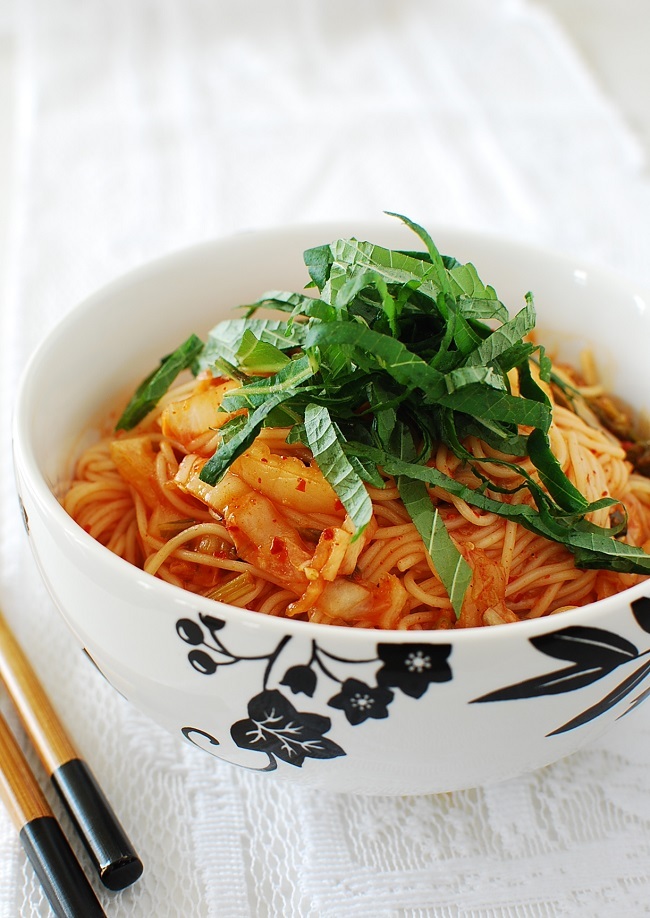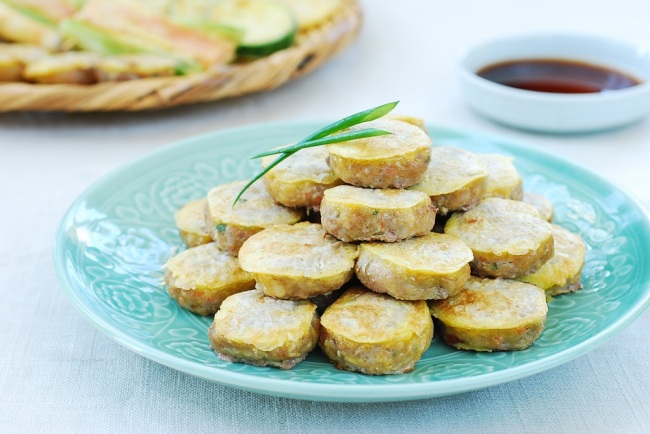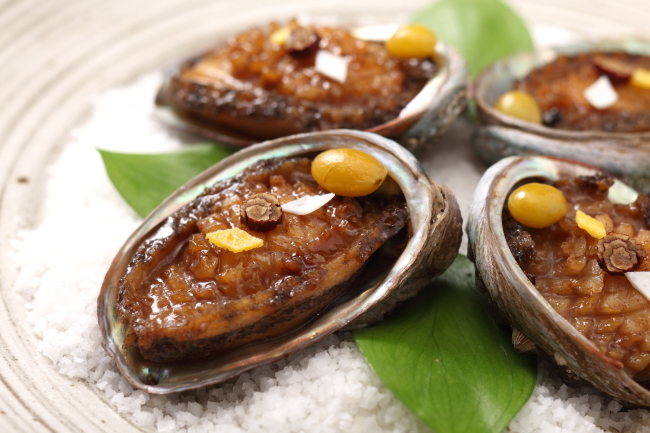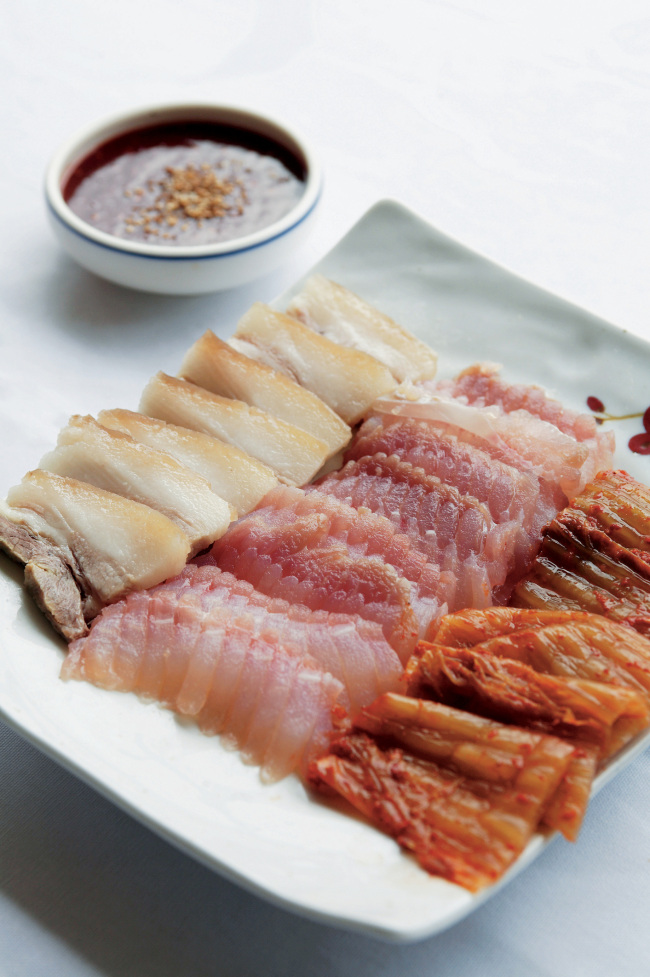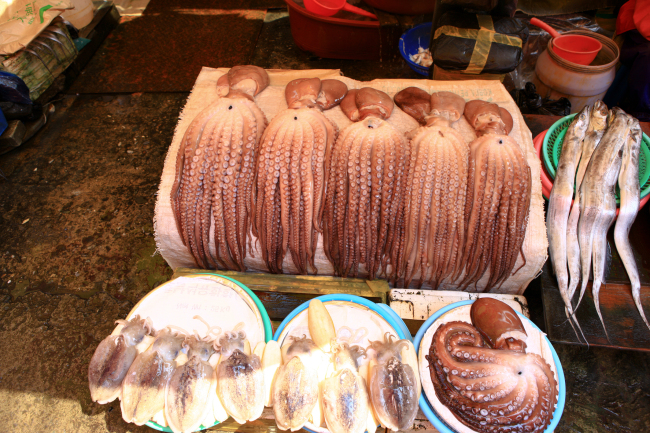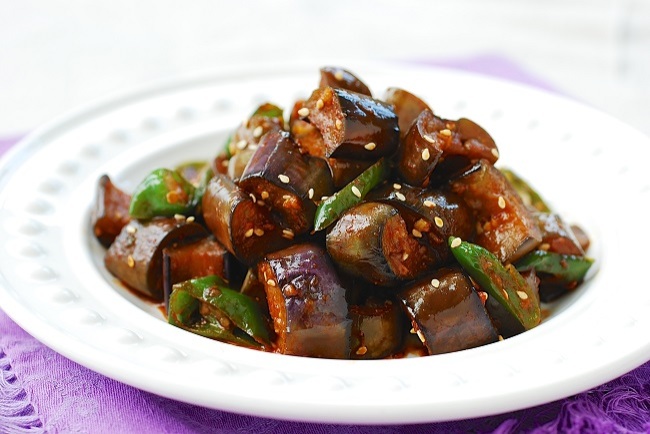 |
| Gaji bokkeum (stir-fried eggplants) (Korean Bapsang) |
Ingredients:
● 2 medium-size Asian eggplants (slender and firm)
● 3-4 green chili peppers (or 1/2 green pepper)
● 2 tablespoons canola or vegetable oil
● 1/2 tablespoon gochujang (Korean red chili pepper paste)
● 1 tablespoon soy sauce
● 1 tablespoon rice wine (or mirim)
● 1 teaspoon minced garlic
● 1 teaspoon sugar
● 1 tablespoon sesame oil
● 1/2 teaspoon sesame seeds
● a pinch of pepper
Cut the eggplants lengthwise in halves. Then cut crosswise into about 2-centimeter-thick chunks. Cut the pepper into about 3-centimeter-long pieces.
Heat a pan with the oil over medium-high heat. Stir-fry the eggplants quickly, about a minute or until the outside starts to soften.
Add all the remaining ingredients.
Continue to stir-fry until the eggplants are well coated with the seasonings and the pepper is slightly wilted.




